The porch is an integral part of any private house, cottage or cottage. Manufacturing ...
|
|
Nowadays, summer residents often erect shield houses in their areas. The main thing... |
The modern revival of interest in bath business is associated with a stunning discovery ... |
Brinding of the basement of the house: step -by -step instructions
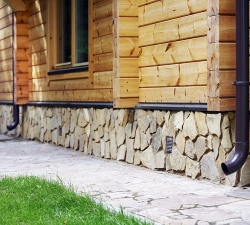
The procedure for finishing the basement of the building is a rather important process that requires special attentiveness. Since it is the base that is under the strong influence of moisture and other stimuli. About how to choose the right material for finishing the basement and how to install it below.
Table of contents:
- Features of the cladding of the basement of the house
- Clinker tiles for cladding basement
- DIY basement cladding at home: stone, polymarpes and resin tiles
- Features of the cladding of the base with artificial stone
- Technology for cladding basement with polyvinyl chloride panels
- Mosaic plaster for cladding basement - technology
- Brick cladding options with brick
Features of the cladding of the basement of the house
The base is located from the bottom of any building, most often tiles or stones are used for its decoration. The base not only performs the decorative function of the building, but also protects it from moisture penetration, dampness, load distribution.
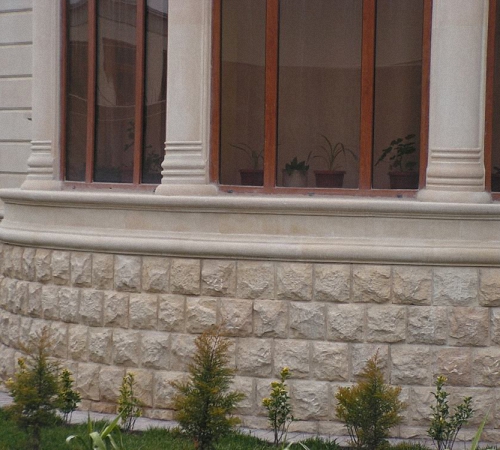
The base is the basis for the construction of the load -bearing walls. The correct construction of the base is reflected in the quality of the future building.
The most irritable factor for the basement is atmospheric precipitation. In addition, it is under the influence of groundwater, and the difference between the temperature in the ground and in the air.
Therefore, the most important requirement for the finishing material used in the cladding of the basement is its stability and protection of this element from moisture. In addition, a correctly trimmed base allows for reliable protection of the foundation.
The process of choosing materials for the finish of the basement should be based primarily on the use of high -strength materials that are resistant to temperature changes and moisture. At the same time, they should have an attractive appearance and harmonize with the common exterior of the building.
There are cases of monolithic finish of the basement, which represents the combination of the foundation with the basement. For these purposes, concrete, separate blocks, stone or special brick is used. The rise of the base above the ground occurs at the level of 500-700 cm.
Most often, the finishing of the base is carried out after the construction of the walls. It is advisable to do otherwise, the base must be protected immediately after the foundation was erected. At the same time, all work is carried out in the form of waterproofing, plastering, finishing.
Before the start of facing work, a drainage pillow is created, covering the entire perimeter of the structure. It has the form of a recess, by 150-200 mm, the width of which is about half a meter.
After the finish is performed, the recess is poured with a gravel that performs the drainage function. After preparing the basement, it is plastering, using cement-cement plaster. To increase the strength of the structure, in order to connect the basement with the foundation, they are strengthened by a special net. To ensure additional waterproofing of the basement, special additives in the form of plasticizers, such as river sand, should be added to the solution.
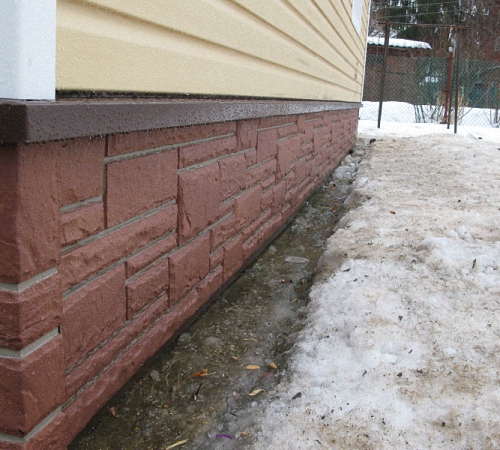
If this is not done, then the quality of the finishing of the base will decrease significantly, while the foundation will suffer, and the walls in the house will always be raw. On wet walls, wallpaper is poorly held and mold with a fungus appears, especially dangerous to human health.
In addition, there are two options for arranging a basement:
- drowned;
- exalted.
The first option is preferable, since it does not lead to accumulation on the surface of snow, ice. In addition, atmospheric precipitation does not fall on it and it needs less moisture protection.
The second option for arranging a basement is characterized by a more attractive appearance, but it requires special protection using castings, tiles with slopes, waterproofing components.
Before starting the finish of the base, it should be examined by its base. It should differ in strength and evenness. It should not have dirt and dust on it. To eliminate various kinds of irregularities, special compositions of the leveling direction are used to remove protruding areas or filling out the depression.
To impregnate the surface, a special primer is used, it will improve the adhesion between the surface of the base and the finishing material.
Materials in the form of artificial stone need additional processing using moisture repellents. Thus, the material will acquire additional stability before moisture and dirt. For these purposes, compounds in the form of hydrophobisators are suitable. To apply them, it is enough to use a brush or a roller.
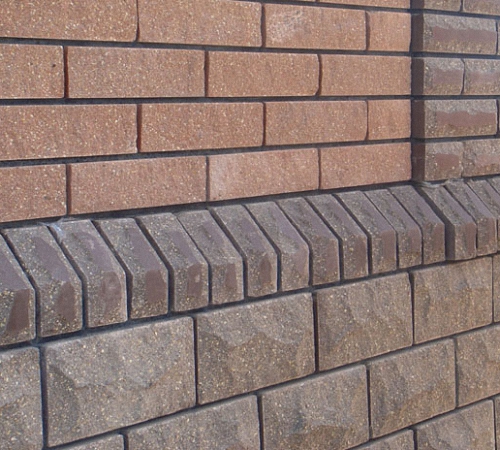
Clinker tiles for cladding basement
Materials in the form of plates for finishing the basement have a cement-stone, polystyrene or asbestos-cement base. For their fixation, special compounds based on moisture resistant glue are used.
The use of clinker tiles for the cladding of the basement allows you to get an aesthetically attractive base that is in perfect harmony with clinker brick. The tile is particularly ease and does not load the design of the building. Its thickness varies within 7-20 mm. In addition, special materials that simplify the finish are used to improve angular joints.
Installation of clinker tiles involves determining the level for installing its first row. For this, the height of the base is divided into the height of the tiles, the joints added to the width.
For example, for a basement cladding, 400 mm high, a stove, the height of which is 65 cm with six -mimmer seams, 6 tiles are required. At the same time, in the lower part of the base there will be a six -million gap, to fill out which will require acrylic or polyurethane mass.
For gluing tiles, an adhesive composition with increased frost resistance is used, characterized by elastic characteristics. It is applied both to the tile and to the surface of the base. Keep in mind that the solution may be on the basis of not more than half an hour on the basis of tiles, then it loses its properties.
To fill the joints between the tiles, a solution of a fuging clinker is used. Clinker tiles are distinguished by zero moisture heating, so it does not need processing with special compounds.

For finishing the basement, you will need:
- primers;
- glue for tiles;
- tiles;
- solution for filling the joints.
DIY basement cladding at home: stone, polymarpes and resin tiles
The effect and attractiveness of the appearance differs the base, in the decoration of which stone tiles were used. But, at the same time, a lot of funds will be required to carry out work and purchase of the material. A natural stone for facing a basement is most often limestone, granite or marble. The shape and configuration of tiles can be very different. Some elements are produced in the form of brick, others in the form of plates. Such tiles have a peculiar texture, its surface is four types:
- grinded;
- lamb;
- granular;
- polished.
The installation of this kind of tile is similar to the installation of clinker material. To fix the tiles on the surface, a special adhesive is used, designed to work with stones. The use of another type of glue is unacceptable, since cracks and defects may appear on the tile. If necessary, there is a holistic appearance of the tile, it is recommended to leave gaps of 4-5 mm between its small parts, and between large 2-3 mm. A special solution is used to fill the joints. To process limestone and sandstone, you will need to purchase a special moisture -repellent impregnation.
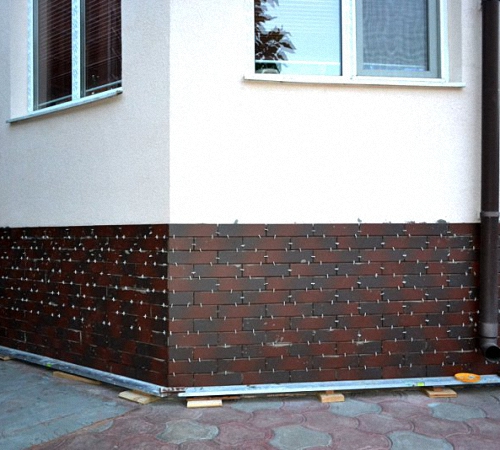
In the presence of a protruding base, a cornice is used to protect the finishes. To carry out the cladding of the base of the house with a stone, you will need the presence:
- primers;
- glue;
- a solution that is filled with the seams;
- Tiles based on shale, granite, marble or limestone.
The cladding of the granite of the base is characterized by a high life of such a coating and good technical characteristics.
More modern finishing material is a polymerrap -based tile. Its use is associated both with the decoration of the facade of the building, and with the cladding of the basement. This type of tile is a composite material on which there is an embossed brick texture. The material has a small weight, so it is suitable for decorating any type of basement. The tile is characterized by high plasticity, stability before the formation of cracks, moisture resistance and resistance before changing the temperature regime.
To fix the tiles, a special crate should be equipped, on which the material is attached using self -tapping screws. In the space of the crate, the insulation is most often installed. The material is easy to wash, does not collect dirt and is easy to use.
The last version of the tile is based on the use of resins for its manufacture. This material is an imitation of clinker tiles or natural stone. They have a thickness of three millimeters. With the help of the material, a decoration of various kinds of surfaces is carried out, even with small irregularities. To cut the tiles, it is enough to have scissors. It is attached to a concrete or plastered base. There are nine color options for such tiles. In addition, it varies in texture, which is embossed and smooth.
Facing of the basement photo:

Installation of such a tile involves the determination of the upper section for its fastening. To apply glue, a gear spatula is used. You should start laying with corner areas, additional materials are not required to fill the joints, since they are filled with glue. To increase the aesthetic attractiveness of the tiles, with the help of a previously moistened brush, the brush is distributed at the seams. The wall should be protected from moisture for three days from the date of installation of the tile.
This material very naturally imitates natural stone, while working on its installation is easier and cheaper.
Features of the cladding of the base with artificial stone
This type of decoration in appearance is similar using tiles based on natural stone. Although ordinary concrete is used for the manufacture of artificial stone. With the help of chemical, organic additives and fillers, the surface has high frost resistance, and dyes help to simulate stone. Artificial stone takes on the type of rock or torn stone.
In the relationship with the recommendations of manufacturers, ordinary or elastic adhesive compounds are used to fix such a stone on the surface. Special additives are used to fill the joints. After finishing the basement, the material is covered with moisture protection tools that significantly improve its life.
The appearance of the surface is presented, although the cost of buying material is less than the price of natural stone.
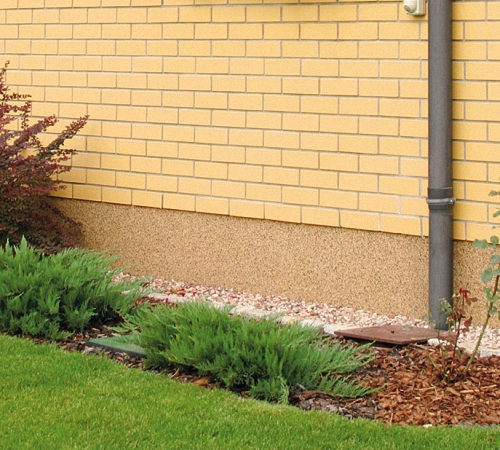
Technology for cladding basement with polyvinyl chloride panels
In order not to carry out wet tile gluing work, a simpler option is used - PVC panels. This material is light and ease of installation. In addition, the panels are stable before changing the temperature regime. There are two main options for PVC panels:
- with imitation of brickwork;
- The mosaic version of the plaster.
The material is attached to a wooden or steel crate. First, the level is set and the start profile is fixed. The first of the panels holds on it. The docking of the elements with each other occurs using grooves, overhead elements are used to close the basement.
There are special overlays for overlapping angles. This type of basement does not need to be processed by moisture -repellent agents.
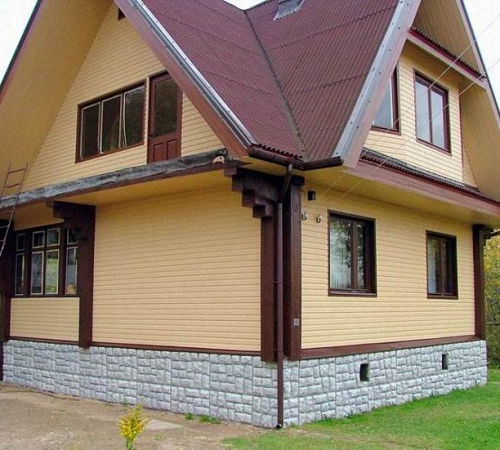
Mosaic plaster for cladding basement - technology
This option of plaster is characterized by the presence of small grains, which have the shape of multi -colored mosaics. Due to the presence in the composition of the resin, plaster is moisture resistance and vapor permeability. In addition, it has high resistance before mechanical influences and low temperature.
This type of plaster falls well on the base of plaster based on gypsum, cement, lime and sand. For materials of piece origin and on the heat -saving version of the plaster, the application of this material is prohibited.
This type of plaster is applied manually. The work will require the presence of a grater. To increase adhesion between plaster and coating, it is recommended to throw a slightly ordinary plaster solution before applying mosaic plaster.
After applying the plaster, the process of defecting it follows on the surface. The grout of the solution is made with a grater. After its application, special hydrophobisators are used, which increase the resistance of the material to ultraviolet, wind and precipitation.
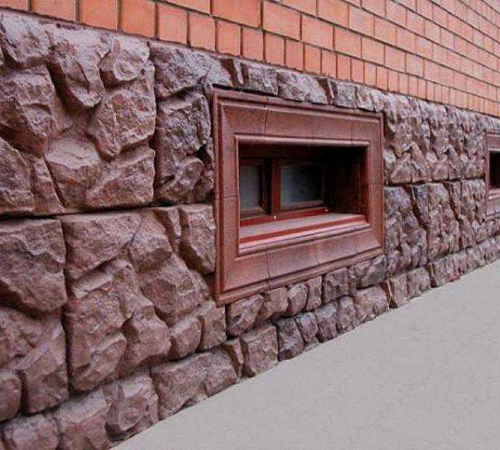
Brick cladding options with brick
Brick masonry improves the appearance of the building, making it more respectable. In addition, the brick is in perfect harmony with other finishing materials used in wall cladding.
There are several options for cladding the basement so that the surface acquires the appearance of brickwork:
1. The use of natural brick - this method is distinguished by the possibility of arranging a ventilated gap into which the insulation is mounted. In addition, brickwork has good thermal insulation characteristics. In the process of work, brick is used:
- Hypercreshed type - is characterized by high weight, low absorption of moisture and good strength characteristics;
- silicate type - is used less often, has the worst operational characteristics, but it is cheaper;
- Ceramic type is a hollow inside, so it retains heat well.
2. In order to give the basement surface the appearance of brickwork is enough to use clinker tiles. They have the best operational characteristics, is easy to styling and is no different in appearance from brickwork. In addition, the presence of effects such as artificial aging, uneven firing, different colors and textures, can improve the appearance of the surface.

3. Basile panels are a simpler imitation of brickwork, the cost of which is much lower than the previous options, and the simplicity of laying is higher. In addition, the panels are easy to care for and are not subject to pollution.
Facing the basement video:
